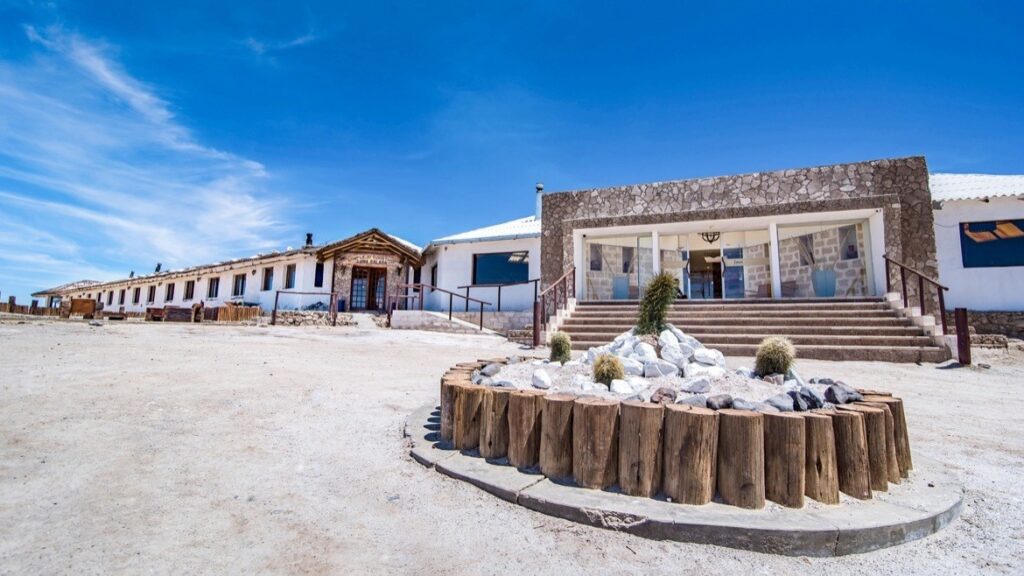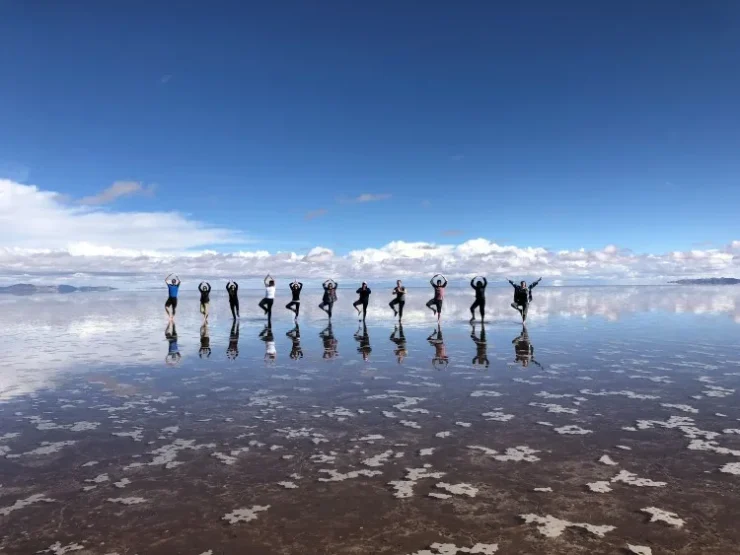One of the most severe and remarkable sights in all of South America, if not on Earth, is the Salar de Uyuni. The largest salt desert in the world, with a surface area of 10,582 square kilometers in the Altiplano, is a remnant of ancient lakes that long ago evaporated. The salt crust here reaches all the way to the horizon, covered in quilted polygonal salt patterns rising from the ground.
According to National Geographic, when adjacent lakes overflow during certain times of the year, a thin coating of water turns this plain into a stunning mirror of the sky. This priceless piece is a rich source of salt and lithium, a substance needed to make batteries for electric vehicles, smartphones and computers. This terrain is home to the world’s first salt hotel and is frequented by visitors who drive along the roads.
The logistics and duration of your trip to the Salar de Uyuni, which is located between Bolivia, Chile, and Argentina, will be determined by your location. Tours generally depart from three locations: Uyuni, Bolivia, (This small town is the most popular starting point for salt desert tours.) San Pedro de Atacama, Chile and Tupiza, Bolivia (The ideal starting point for travelers from Argentina)
There are two distinct seasons in the Salar de Uyuni. Visitors flock to the salt flats during the rainy season (December to April) to take in the spectacular mirror effect. Temperatures are colder during the dry season (May to November), the ground is hardened, and travelers can drive through the stark that are unreachable during the rainy season. The high season, when rates are higher, is said by tour companies to be from June to August.



Although one of Bolivia’s most well-known tourist destinations is the salt desert, it is only a small portion of the stunning Altiplano landscape. A excursion also featuring deserts, volcanoes, geysers, hot springs, and high altitude lakes in the south is popular among tourists.
One of the Salar de Uyuni’s features is the limitless horizon, which allows photographers to experiment with perspective and depth of field. The key to taking the greatest shots is to lower the camera as much as possible and, if your camera allows it, to narrow the aperture as much as possible.
Visitors who have not adequately acclimatized may encounter altitude sickness due to its elevation of 3,650 meters above sea level. Altitude sickness is a pathological disorder seen at high altitudes due to lack of oxygen. Among the symptoms include nausea, headaches, and insomnia. This is worth paying attention.
